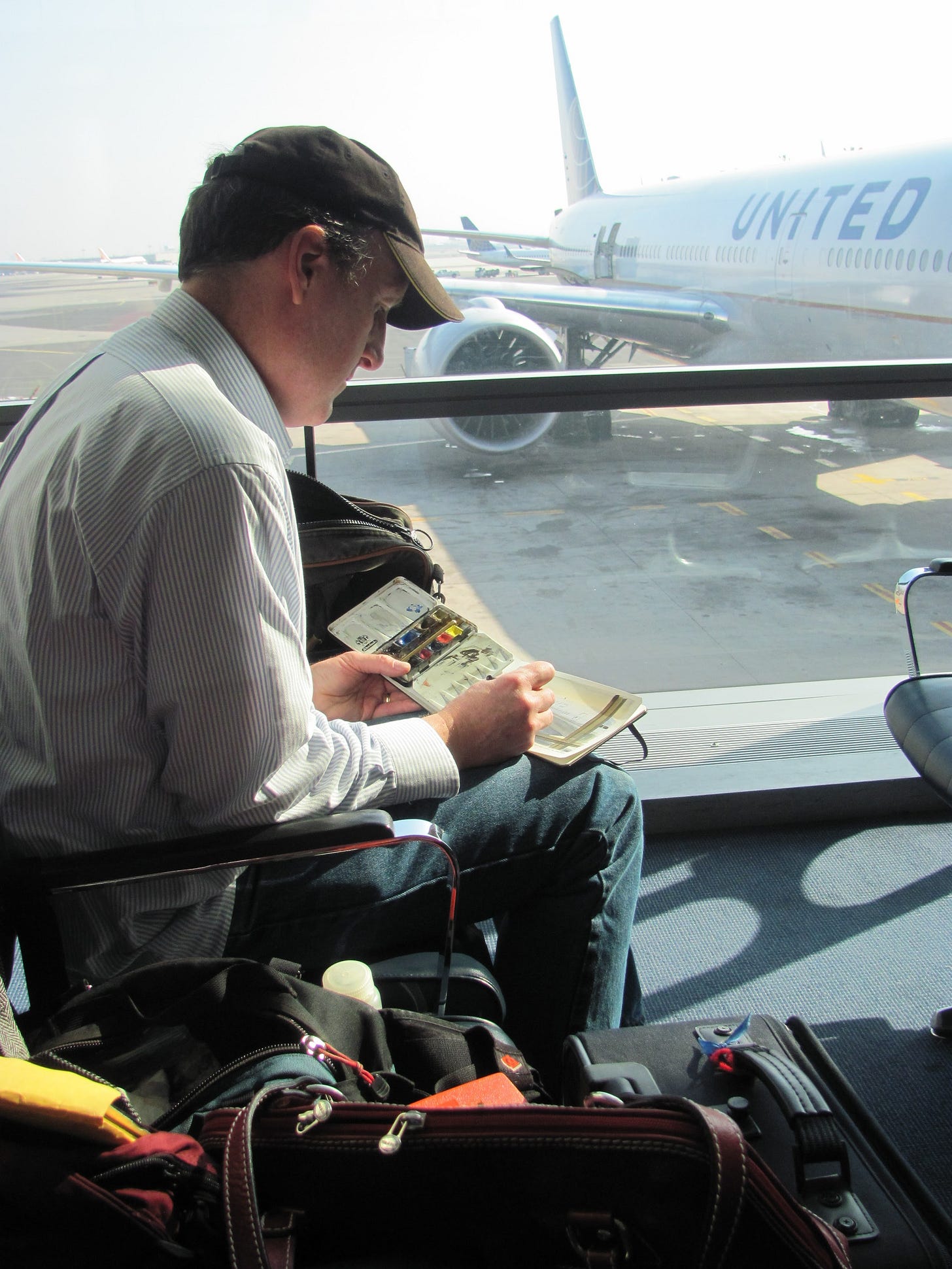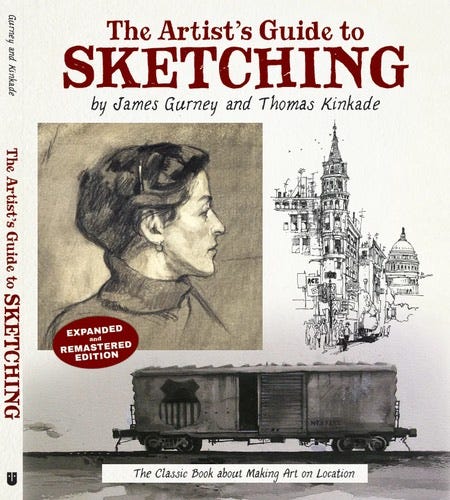How to Get Hooked on Sketching
Substack reader Nancy said in the comments recently that she was given a blank sketchbook and was eager to try it out, but wasn’t quite sure how to make sketching a regular practice.
Nancy, I think I probably speak for all of us when I admit that the first page can be a bit daunting, even for habitual sketchers.
When I’m feeling that way, I keep these three things in mind:
Start on page 2. I can always come back later and do a knockout first page.
I don’t have to show anybody. Lately I’ve been enjoying keeping a sketchbook that’s not for publication, more like my early sketchbooks and idea books that I kept as a student. But I’m also doing sketchbooks that are intended for sharing.
We are all still artists even when we’re not making much art. Being an artist isn’t necessarily about making pictures; it’s about seeing the world in a different way.
That’s why it’s healthy for all of us to make a point of befriending other artists and spending time with them just looking at things together, and analyzing how you’d approach capturing those subjects in various media. If your art pal brings a sketchbook too, you can egg each other on until you’re both unstoppable.
People get into the sketchbook habit for all sorts of reasons. Some are trying out sketching for the first time. Some used to draw as kids, then stopped somewhere along the way. Others feel the pull to make something by hand again.
You can treat your sketchbook as a laboratory, a playground, or a place to explore slightly dangerous ideas outside the guardrails (and surveillance).
Here are some uses for your sketchbook:
Notes from a lecture, with a few caricature doodles.
Thumbnails for a painting or video idea.
Quick captures of people in a waiting room or a café.
Caricatures of people who annoy you, sketched from memory.
Overheard bits of conversation—the crazy things people say!
Sample swatches of media you’ve tried or colors you mixed,
Find the sketchbook that fits your ideas
Lately I’ve been using a small square book because it fits in my back pocket, and it has smooth paper. I like books that open flat and can take various pens, pencil, and light washes. Some folks prefer spiral bound, especially for larger sketches.
You don’t need fancy paper. A cheap one might make you feel freer to experiment, and more willing to be easier on yourself when you mess up. Just be sure the paper isn’t see-through, the markers don’t bleed through, and the pages don’t fall out.
Sharing can be fun
It’s good to be free and private, but posting sketches online or showing them to a friend can motivate us to keep drawing regularly. Just remember that you don’t have to share everything, just like you don’t have to invite every neighbor into your backyard.
It’s totally OK to have pages that are just for you: shopping lists, student experiments, dark or subversive observations, or what George Carlin called “brain droppings.”
So how do we get “hooked” on sketching the way we’re hooked on our phones?
Start by keeping your sketchbook where you’d normally keep your phone. When you reach for one, you’ll pick up the other. Lavish your attention on some detail of your world that you see every day, but never really looked at before. Those few minutes of focus will give you a similar charge that scrolling does, but it’s much more deeply satisfying.
After a while, you’ll start seeing everything as grist for your sketchbook mill. That’s when you’ll know you’re truly hooked.
If you want another blast of inspiration, pick up a copy of The Artist’s Guide to Sketching signed at our store.
In the comments, I’d love to hear the story of how you found your way back to the sketchbook habit, new things you’re trying out, or unusual experiences you’ve had while sketching.






I love an experience that I had while I was sketching in Sedona. A man came to look at my drawing and commented "Now you see an artist at work." I answered with a smile and said that "No, you see an artist at play." We both laughed.
When I first started sketching in public I was really shy about showing my work. But then I realized that people were just happy to see someone enjoying themselves by sketching so I am comfortable sketching in public now. .
When I first started sketching, it felt like a performance or display of my ability. Performative sketching, not for the love of sketching, but for the love of being perceived as someone who draws. I had an artist “ego death” when someone I was dating tore out a page to show his friends how “weird” the drawing was. To be fair, it was a portrait of someone shooting lasers out of their eyes, so he wasn’t entirely wrong.
I think it took that initial push of shame to start sketching privately and learn how to be more loose with drawing. Once I got over the need to impress people, I felt free to explore ideas and concepts that might make me look like a beginner or amateur. Crappy hands, arms that looked broken, toes bent at odd angles—I didn’t care. I was okay with being seen as an amateur artist if it meant I could sketch whatever I wanted.